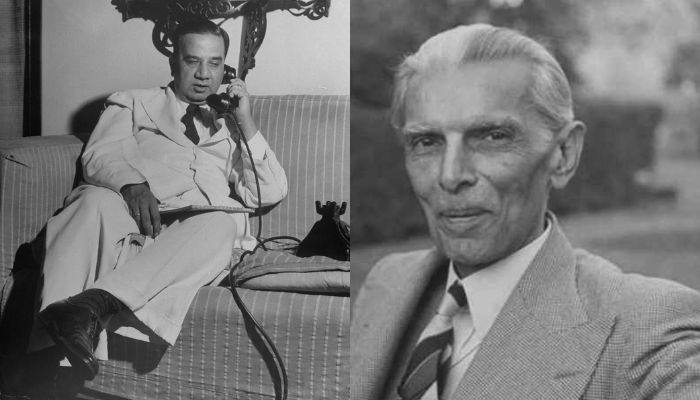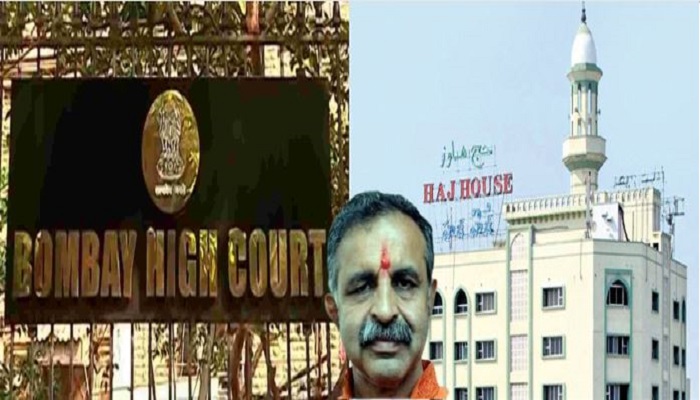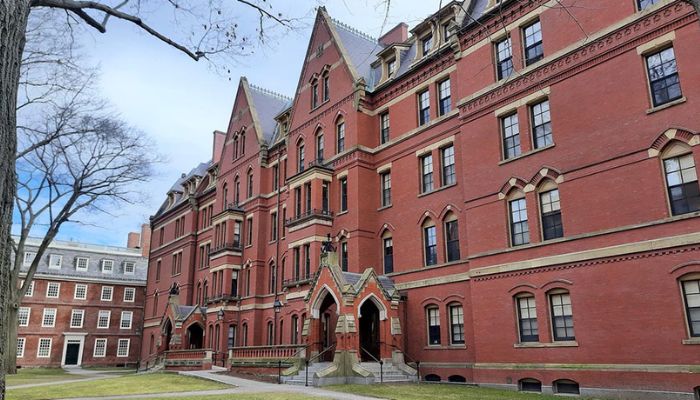Read about the political developments before the Direct Action Day

[ad_1]
On 16th August 1946, Muslim League called for a Direct Action Day in undivided India for the Muslim party’s demand for a separate Islamic nation Pakistan. As the Muslim League had formed a government in then Bengal province owing to the victory in the 1946 provincial elections, this activity was executed to its fullest potential in the eastern Indian state. This call for ‘Direct Action’ took thousands of Hindu lives in Bengal, especially in Kolkata which was then known as Calcutta.
This state-sponsored massacre of Hindus was going on for the next 3 to 4 days. Neither MK Gandhi nor Jawaharlal Nehru visited the city to console victim Hindus and/or to know the atrocious crimes against Hindus during this horrifying pogrom. The Direct Action Day was not only politically motivated, but it essentially had a theological build to justify the killings of non-Muslims as the whole Muslim politics in the world in general and particularly in the subcontinent before, around, and after the formation of Pakistan finds its roots in the Islamic religious books.
Therefore, it becomes necessary to understand this theological build, and the sequence of systematic Islamopolitical operations of the Muslim League which culminated in what was called the Great Calcutta Killings by ‘The Statesman’ on 20th August 1946 when it was published after a gap of 3-4 days of violence. In this article, we will take a look at the political developments that formed the background of Direct Action Day. Notably, it was not a day of violence, but it lasted for 3 to 4 days when innocent Hindus in Kolkata were mercilessly butchered by the Muslims.
The 1946 Provincial Elections
The 1946 Indian provincial elections marked a pivotal juncture in the nation’s history. These elections followed the conclusion of World War II and preceded India’s partition in 1947. The election process operated under the framework of separate electorates, effectively segregating the Muslim and Hindu communities into distinct voting constituencies. This electoral system, instituted by the British during the 1930s, widened the divide along religious lines in the Indian populace which already existed because of the exclusive nature of the religion of Islam.
Out of the 1585 seats, the Congress won 923 seats while the Muslim League won 425 seats. Muslims League fought 429 Muslim seats and won 425 of them. In a 250-seat state assembly of Bengal province, there were 119 Muslim seats and the Muslim League won 113 of them. There were 6 other Muslim elected representatives among others. Husyen Shaheed Suhrawardy of the Muslim League became the prime minister of the province on 23rd April 1946. Besides Bengal, the Muslim League also won the provinces like Punjab and Sindh.
The calls for violence started right from the election manifesto
The violence against Hindus which was unleashed in Bengal on 16th August 1946 was not sparked all of a sudden. In fact, the election manifesto of the Muslim League published before the voting itself was like a declaration of war only. The title of the election manifesto was ‘Let Us Go To War’.
It read, “Quaid-Azam Mr Mohammad Ali Jinnah on behalf of the All India Muslim League (AIML) declares that the ensuing election of the Central and the Provincial legislatures of India will be taken as a plebiscite of the Muslims of India on Pakistan and the Working Committee of the Bengal Provincial Muslim League (BMPL) in its meeting on 1 August 1945 adopted a resolution to this effect. Major Attlee’s Labour government on behalf of British Imperialism has accepted this challenge.”
It added, “These days the ballot box is the only medium through which public opinion can be ascertained with the greatest possible accuracy. The Muslim League, therefore, as the organization of the plain blunt Muslims who are not addicted to clever machinations, have straight way demanded a general election in India and have declared that they would take this election in India as a plebiscite of Pakistan and a plebiscite on their claim to represent the whole of Muslim India. His Majesty’s government has decided to hold an election the next winter. We are, therefore, in the midst of war as the General Election is going to be the first pitched battle for Pakistan with the enemies of Muslim India.”
Almost All Muslims Got Involved in the Formation of Pakistan
Muslim League was a political party. But the language used in this manifesto is that of a war-willing army. Words like fight, war, battle, cavalry, army, soldiers, etc. were amply used in this manifesto. The 1946 elections were supposed to elect representatives who will form governments in provinces and also in the centre to together work on the Constitution of India. The Muslim League presented that voting to the Muslim League will be a vote in favour of its demand for Pakistan. It appealed to Muslims from all strata of society to participate in this movement and indeed almost all of them backed the idea of Pakistan which was visible in the election results.
This manifesto said, “Pakistan means complete independence. They are fools, dreamers, visionaries or hypocrites who think that Pakistan can be achieved without the greatest imaginable struggle and sacrifice. It must be known clearly to every soldier of Pakistan that the way to Pakistan is harder than the way to the cavalry. Our poets and literators, artists and artisans, youths and students, landlords and peasants, ulama and laymen must answer the clarion call of the great leader of Muslim India, sink all their differences, forget the past, and pull all their resources for the winter struggle, the general election of Legislatures.”
The Similarity Between Tukde Tukde Gang and the Muslim League
The Islamists and Urban Naxals often referred to as the Tukde Tukde Gand are seen peddling a particular narrative in the last so many years that India was never a unified nation, and it was always multiple nations living under an umbrella and whatnot. A similar argument was once given by Rahul Gandhi as well. The following paragraph in the Muslim League’s manifesto for the elections held months before the Direct Action Day is no different.
It says, “Free India was never one country. Free Indians were never one nation. In the past India was “Akhand” under the domination of the Mouriyas and the Mughals and is now “Akhand” under the domination of Great Britain. Liberated India must necessarily be, as God has made it, a subcontinent having complete independence for every nation inhabiting it. However, much weakness the Congress may have for the capitalists of Bombay and however much they may desire by way of doing a good turn to them to open opportunities for exploiting the whole of India under the cover of “Akhand Bharat” Muslim India to a man will resist all attempts of the Congress to establish a dictatorship in India of any coterie, group or organization. Pakistan means freedom for all, Muslims and Hindus alike.” And what kind of freedom Hindus experienced in Pakistan after the partition is not unknown to anyone.”
The Muslim League didn’t consider Congress even as a potent political opponent
However unreal it may sound, it is true that the Muslim League did not consider Congress as a potent political opponent. It disregarded it as just another participant in the electoral process who claims to represent everyone including Muslims in India. But, the Muslim League was so confident in the consolidation of Muslims on religious notions that it talked of dealing with Imperial British Power immediately after these elections and this was mentioned in the manifesto. While doing so, the Muslim League also attempted to guilt trip Congress and Hindu Mahasabha by indirect accusations of not cooperating with the Muslim League, rather oppressing it. The Muslim League was playing a victim card by using words like fascist powers and defensive fight. But for all practical purposes, it was preparing the mentality of the Muslims in India to wage a decisive war against non-Muslims as ordered in the Islamic scriptures.
The manifesto said, “The general election is the beginning of our struggle. Immediately after recording our votes in favour of Pakistan at the polling centres, immediately after winning our plebiscite liquidating the false claims of the Congress to represent the Muslims we shall direct our attention towards British Imperialism and demand immediate transference of power to the peoples of India on the basis of Pakistan. We are going to fight the Congress but we don’t feel quite happy about it as we never like to consume any part of our energy in fighting the Congress, the Mahasabha or in fact any Indian people or organisation. Our battle is entirely defensive. We did not like to fight Congress, they unjustly and unfairly, like the Fascist aggressors have forced war on us. Therefore, without malice, without vengeance, with complete faith in our ultimate victory, with heart within and God overhead LET US GO TO WAR.”
This manifesto was issued by Abul Hashim, Secretary of Bengal Provincial Muslim League in late August 1945 which is much before the actual elections. It was later published by Society for Pakistan Studies, Dhaka, in January 1970. It was cited in the PhD thesis of Shila Sen titled “Muslim Politics in Bengal 1937-47” presented in JNU in 1972.
Practically, there is no place for non-Muslims in a state ruled by Islam
It has been clear through so many historic accounts, and studies of the Islamic Sharia that non-Muslims do not have any civil rights in a state ruled by Islam. They may remain alive only at the mercy of the Islamic ruler. Even while living so, it is rightful of a Muslim ruler and his followers to humiliate the non-Muslims with every inhuman method allowed in the Sharia including forcibly paying Ziziya Taxes, confiscating their properties and capturing their women and children, attacking or even killing them for not accepting the ‘generous invitation’ to convert to Islam. Hundreds of pages of the medieval history of India are full of such references which describe how Islamic rulers piled up towers of the skulls of Hindus to celebrate various occasions from birthdays to war victories. And what elected legislative representatives of the Muslim League started immediately after the results of the 1946 elections was no different.
Dinesh Chandra Sinha and Ashok Dasgupta mention in their book ‘1946: The Great Calcutta Killings and Noakhali Genocide’ in detail about this. The book mention –
The League leaders, intoxicated by the victory at the polls, now became openly bellicose. At the convention of the league legislators, “Ismail Chundrigar of Bombay said the British had no right to hand over the Muslims to a subject people over whom they had ruled for 500 years. Mohammed Ismail of Madras declared that the Muslims of India were in the midst of a Jihad, a holy war. Shaukat Hayat Khan (a Minister in Khizr Hayat Khan’s war-time Cabinet, later dismissed) said if Muslims were ‘given a chance’, they would ‘show a rehearsal now when the British army is still there’. Sir Feroze Khan Noon thundered that if they were driven to fight a central government or Hindu raj, then the havoc which the Muslims will play will put to shame what Chengiz Khan or Halaku did.”
Needless to explain, these are all open calls for violence against Hindus – a call for Hindu Genocide across the lengths and breaths of united India, essentially inspired by the Quranic Concept of Jihad. When these calls for the genocide of innocent Hindus were being raised, MK Gandhi – also known as a Mahatma, meaning a great soul – was busy asserting that non-violence is the greatest virtue and that partition will take place only over his dead body.
Congress cryptically rejected the Cabinet Mission and Jinnah resorted to anti-Hindu Direct Action
Cabinet Mission introduced immediately after these provincial elections of 1946 proposed that united India be grouped into three sets. Federal India, groups of provinces, and princely states were its three layers of operation. Provinces were grouped as Northwest India, eastern India and the remaining central portions of India. The distribution of the Hindu and Muslim population over the territories and the Muslim League’s doubts regarding Pakistan were addressed by Mr Cripps who brought this Cabinet Mission plan to India. Based on his assurance, Muslim League agreed to accept the plan assuming that it at least contained the germ of Pakistan with separate electorates given.
The Congress, on the other hand, ensured nothing except that it will just enter the constituent assembly and that it may leave the assembly anytime it feels that it does not suit its agenda. MK Gandhi looked at the Cabinet Mission Plan as a partition without dismembering. The Congress categorically opposed the grouping system of provinces which was a key feature of the plan which allured Jinnah to agree on the unified India according to the plan.
Dinesh Chandra Sinha and Ashok Dasgupta write –
The Cabinet Mission’s clandestine effort to placate the Muslim League through the compulsory grouping of provinces was thus shattered and Mr. Jinnah’s hope of achieving a bigger Pakistan in no future dashed to the ground. This made Mr Jinnah furious and he called upon his followers to resort to “Direct Action”, on 16 August 1946 undoubtedly against the Hindus, and not the Britishers.
Neither Congress came ahead with any alternate proposal to fade away the fear of possibilities of ever-growing polarisation in the proposed united India nor did it attempt to oppose the Direct Action Day, nor did any top leaders visit the victims of the violence unleashed in Bengal. It silently pushed Hindus under the Islamic sword which was hailed in a meeting of the Muslim League held at the end of July in 1946.
The resolution of the Direct Action Day
The All-India Muslim League passed the resolution of the Direct Action Day on 29th July 1946. It said,
“Whereas the League has today resolved to reject the proposal embodied in the statement of the Cabinet Delegation and the Viceroy of May 16, 1946, due to the intransigence of the Congress on the one hand and with the breach of faith with the Muslims by the British Government on the other; and whereas Muslim India has exhausted without success all efforts to find a peaceful solution of the Indian problems by compromise and constitutional means; whereas the Congress is bent upon setting up a caste Hindu Raj in India with the connivance of the British; and whereas recent events have shown that power politics and not justice and fair play are the deciding factors in Indian affairs; whereas it has become abundantly clear that the Muslims of India would not sit content with anything less than the immediate establishment of an independent and full sovereign State of Pakistan and would resist any attempt to impose any constitution, long terms or short term, of the setting up of an Indian Government at the Centre without the approval and consent of the Muslim League, the Council of the All-India Muslim League is convinced that the time has now come for the Muslim Nation to resort to direct action to achieve Pakistan and assert their just rights and to vindicate their honour and to get rid of the present slavery under the British and the contemplated future of caste Hindu domination. The Council calls upon the Muslim nation to stand as a man behind their sole representative organisation, the All-India Muslim League and be ready for every sacrifice.”
This brief declaration of the Direct Action Day explains the reasons behind many issues in present-day India. This explains why Islamists in India find it uncomfortable to digest the fact that Hindutva is a mainstream political ideology today and rather than just reacting to Islamic fanaticism, it is paving its way ahead through the assertion of its civilisational identity that encompasses many philosophies, embraces everyone, hates nobody, and spares none of the vested interests against the civilisation.
It also explains how, in a manner similar to present-day Islamists in India, the Muslims in undivided India were not ready to live in a Hindu-majority and thus Hindu-dominated India after the end of direct British Rule. The Muslim League received 86.7% of the Muslim votes in then India’s Muslim constituencies, and many parts of it are still in present-day India. This explains how a large section of those Muslims who were left behind here was left behind either due to a lack of means to mobilise or to accomplish an unfulfilled agenda while enjoying all the perks of a functioning democratic state. In the next article about Direct Action Day, we will take an account of the way Muslim leaders decoded this resolution, how Islamism was escalated through various leaflets, the declared and undeclared agenda of Direct Action Day and the horrific violence that played havoc on the streets of Kolkata for 3 to 4 days.
[ad_2]
Source link



